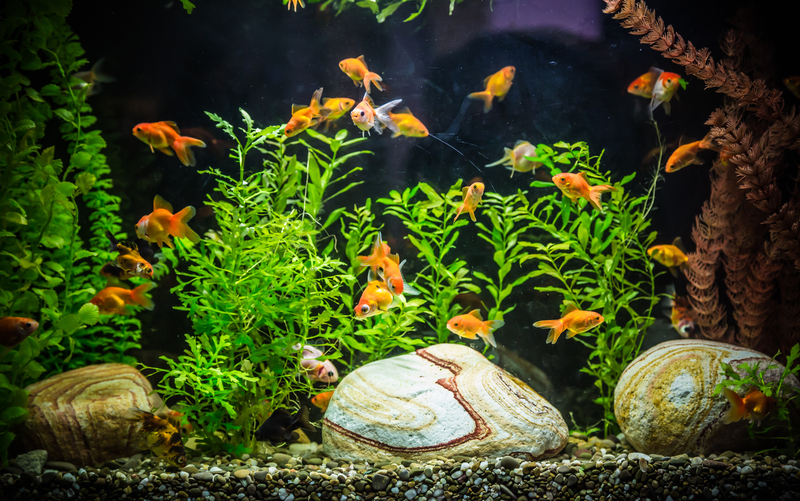Minimalist Living: Optimize Your Tiny Home
Posted on 27/09/2025
Minimalist Living: Optimize Your Tiny Home
The concept of minimalist living is growing in popularity as more people recognize the benefits of simplicity in their lives. While minimalism can be applied to various aspects of life, it's most noticeably embraced in the way people design and live in their homes. One specific choice that aligns perfectly with minimalism is tiny home living.
The Essence of Minimalist Living
Minimalist living is about reducing clutter, embracing simplicity, and focusing on what truly matters. It's a lifestyle choice that emphasizes quality over quantity, function over form, and mindful consumption. By stripping away the excess, minimalists aim to create a life filled with purpose and intention.

The Rise of Tiny Homes
The tiny home movement has gained momentum over the past decade as a practical application of minimalist principles. A tiny home is typically defined as a residential structure that is significantly smaller than the average house. They usually range from 100 to 400 square feet. Tiny homes promote a lifestyle centered around simplicity, efficiency, and sustainability.
Benefits of Tiny Home Living
Living in a tiny home offers numerous benefits that align with minimalist values.
- Cost Savings: Tiny homes are generally much cheaper to build and maintain.
- Environmental Impact: Smaller homes use fewer resources, making them more sustainable.
- Simple Living: The limited space encourages you to minimize belongings and focus on essentials.
- Mobility: Some tiny homes are built on wheels, offering the freedom to move as you please.
- Less Maintenance: With less space to clean and maintain, you have more time for other activities.
Optimizing Your Tiny Home
Living in a tiny home requires thoughtful planning and optimization to make the most of your limited space. Here are some strategies to help you maximize your tiny home's potential.
1. Smart Storage Solutions
In a tiny home, every inch counts. Implementing smart storage solutions can help you keep your space organized and functional.
- Multi-functional Furniture: Choose furniture that serves more than one purpose, such as a bed with built-in storage drawers or a dining table that doubles as a workspace.
- Vertical Storage: Utilize wall space for shelves, hooks, and cabinets to keep the floor clear and maximize vertical space.
- Under-Floor Storage: Consider installing storage compartments beneath the floorboards for items you don't need frequently.
- Hidden Storage: Look for hidden storage opportunities, such as under the stairs or inside built-in seating.
2. Efficient Layout Design
The layout of your tiny home plays a crucial role in its functionality. An efficient design can make your space feel more open and comfortable.
- Open Floor Plan: An open layout can create a sense of spaciousness. Avoid unnecessary walls and partitions that can make the space feel cramped.
- Define Zones: Clearly define different zones for sleeping, cooking, eating, and relaxing to ensure each area has a specific purpose.
- Flow of Movement: Design your layout to allow easy movement between different zones without obstacles.
- Natural Light: Incorporate large windows and skylights to bring in natural light, making the space feel brighter and more inviting.
3. Minimalist D?cor
Your choice of d?cor can significantly impact the look and feel of your tiny home. Embrace minimalist design principles to create a clean, uncluttered space.
- Neutral Colors: Opt for a neutral color palette to create a calming and cohesive environment.
- Simple Furniture: Choose furniture with clean lines and minimal ornamentation to maintain a sense of simplicity.
- Few, Meaningful Items: Decorate with a few meaningful items rather than numerous decorative pieces.
- Greenery: Incorporate plants to bring a touch of nature indoors and improve air quality.
4. Sustainable Living
Tiny homes offer an excellent opportunity to live sustainably. Incorporating eco-friendly practices can help you reduce your environmental footprint.
- Energy Efficiency: Use energy-efficient appliances and LED lighting to reduce energy consumption.
- Water Conservation: Install low-flow fixtures and a composting toilet to minimize water usage.
- Renewable Energy: Consider using solar panels or wind turbines to generate your own electricity.
- Recycled Materials: Build or furnish your tiny home using recycled or reclaimed materials.

5. Adopt a Minimalist Mindset
To truly thrive in a tiny home, adopting a minimalist mindset is essential. This mindset shift involves more than just decluttering physical space; it's about simplifying your entire lifestyle.
- Intentional Living: Make conscious decisions about what you bring into your home and how you spend your time.
- Quality Over Quantity: Invest in high-quality, durable items that serve multiple purposes.
- Mindful Consumption: Reduce waste by choosing products with minimal packaging and opting for reusable items.
- Gratitude: Practice gratitude for the things you have and the experiences you enjoy, rather than constantly seeking more.
Conclusion
Minimalist living through a tiny home lifestyle offers a refreshing departure from the complexities of modern life. By focusing on what truly matters, embracing smart storage solutions, designing efficient layouts, and maintaining a minimalist d?cor, you can create a functional, comfortable, and serene living environment. Furthermore, adopting sustainable practices and a minimalist mindset will enhance your overall well-being.
Embracing a minimalist lifestyle in a tiny home is not just about downsizing; it's about choosing a life of purpose, freedom, and joy. Whether you're considering transitioning to a tiny home or simply looking to optimize your existing one, these principles can help you create a space that aligns with your values and enhances your quality of life. Remember, in the world of minimalism, less truly is more.














